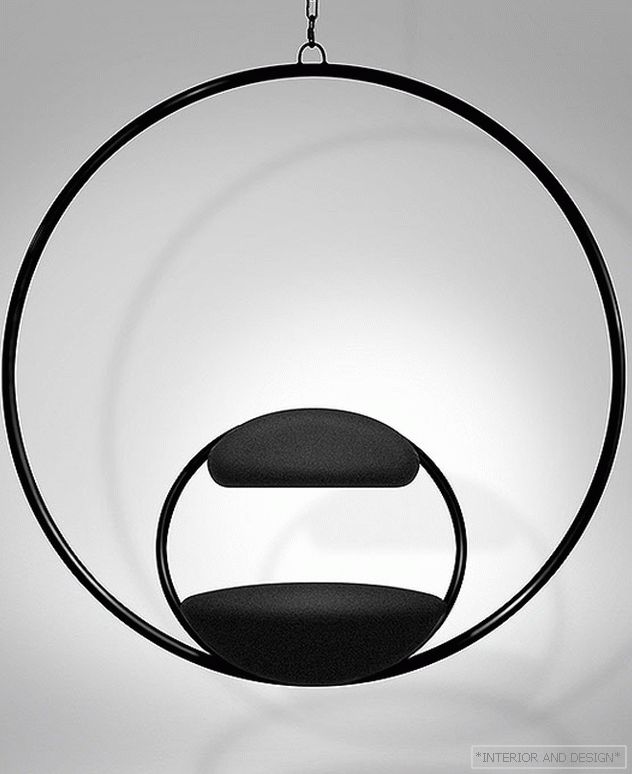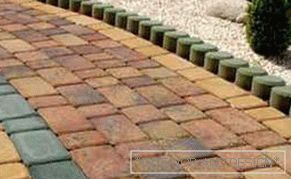 В последнее время огромной популярностью пользуются строительные материалы, из которых создаются тротуарные дорожки, площадки, подъездные аллеи к домам и гаражам. Paving stone, про которую идет речь, имеет большое многообразие форм и решений по цветовому и дизайнерскому оформлению. Поэтому зачастую ее подбирают в одном стиле с комплексом архитектурных строений: заборами, наличниками для окон и дверей, садовым камином и скамейками со столиком к нему.
В последнее время огромной популярностью пользуются строительные материалы, из которых создаются тротуарные дорожки, площадки, подъездные аллеи к домам и гаражам. Paving stone, про которую идет речь, имеет большое многообразие форм и решений по цветовому и дизайнерскому оформлению. Поэтому зачастую ее подбирают в одном стиле с комплексом архитектурных строений: заборами, наличниками для окон и дверей, садовым камином и скамейками со столиком к нему.
Content
- 1 Advantages of paving stones
- 2 Choose paving stones
- 3 Making paving stones
- 4 Consider the basic methods of laying pavers
- 4.1 We lay the pavement on the footpath
- 4.2 Constructing parking areas for cars
- 4.3 We lay the stone blocks on the coating of concrete
Advantages of paving stones
In comparison with road building materials like asphalt and concrete, pavement has a number of advantages:
- no accumulation of water on the surface, as it freely seeps through the gaps between tiles;
- if necessary, pavers can be disassembled and re-lay, while the material does not lose its properties, for example, when laying communications;
- does not melt and does not emit harmful for the health of substances;
- possibility of self-styling;
- high strength, moisture and frost resistance.
Choosing paving stones
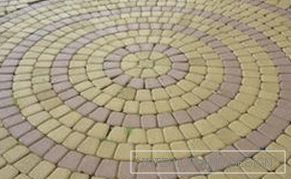 There are varieties of pavers like вибропрессованная, and vibrocast. The technology of the first of them implies crimping of the concrete mix in a special mold under high pressure. Used to create different tracks with loads.
There are varieties of pavers like вибропрессованная, and vibrocast. The technology of the first of them implies crimping of the concrete mix in a special mold under high pressure. Used to create different tracks with loads.
The vibrolite tile combines the technology of reproduction of cast and vibro-pressed pavers, therefore it has received unique technical characteristics. It: high strength, permeability, frost resistance. The smooth quality of the surface of the mold is ensured by the presence of fine crushed stone in the initial mixture. It is used for objects with huge loads, for example, for registration of areas, entrances, parking
We make paving stones
Cobbles can be bought at any specialty store. It presents a huge variety of its forms, colors and quality. But you can also make it yourself. This will require:
- Plastic form.
- The main casting mixture: cement and sand.
- Dry powder paint is a mineral dye.
Plastic forms can be easily purchased in hardware stores. They are quite comfortable and beautiful, do not require additional lubrication, as homemade forms.
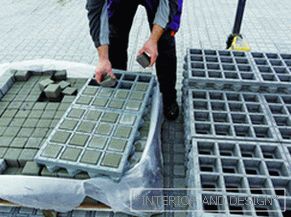 The solution is made from a standard set of materials: cement and sand (1: 3 ratio). In order to get a stronger product, add to the composition small gravel. In this case, take 2 parts of all ingredients.
The solution is made from a standard set of materials: cement and sand (1: 3 ratio). In order to get a stronger product, add to the composition small gravel. In this case, take 2 parts of all ingredients.
To give a certain color to the product add dry powder paint to the solution - mineral dye. In this case, the tile will be painted evenly. But it happens when the cement and sand are initially white. It is sometimes practiced to impart a peculiar pattern to pour the dye directly onto the tile, and then rub it gently into the surface using a metal trowel. This process should occur at the stage of freezing the solution.
To make the product durable and reliable, each tile must be reinforce reinforcement - You can take a separate trim metal rods. The plastic form is half filled with the prepared solution, then the reinforcement is laid out and re-filled with solution to the very top of the form. After that, the mixture must be properly compacted, leveled and smoothed. So that the paving stone has a shiny and smooth surface, it is still not a dry product neatly polished. To do this, it is sprinkled with small portions of cement and smoothly smooth. To give a decor, small stones are also rubbed into the surface.
The hardening of products in the forms lasts for several days. From time to time, future products are needed. wet with waterso that the solution does not crack.
Consider the basic methods of laying pavers
- When it is planned to create footpaths, platforms and blind areas it will be sufficient to lay the paving stones on the prepared foundation from rubble and sand;
- When creating platforms for passenger cars or, for example, a garage floor, it is permissible to create a foundation of rubble (gravel) and cement-sand mixture;
- At the sites where heavy trucks will be placed later, the pavement must be laid on concrete foundation.
Each of these methods will be considered in detail.
We lay the pavement on the footpath
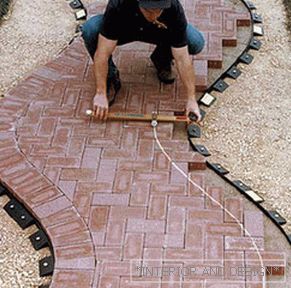 With the help of simple devices: pegs and ropes make the layout of the future pedestrian walkway. We produce throughout this area excavation, without forgetting to give the base small slopes, in order to avoid large accumulations of water.
With the help of simple devices: pegs and ropes make the layout of the future pedestrian walkway. We produce throughout this area excavation, without forgetting to give the base small slopes, in order to avoid large accumulations of water.
The next mandatory step will be soil compaction. What tool you will produce it, you decide. As the simplest and most convenient option is a manual tamper, which can be made independently from an ordinary log. A layer of rubble is poured into this compacted base (fraction 30–40 mm) and compacted again. A cushion of such material must be at least 10 centimeters.
Although there is a perception that it is not necessary to do this for pedestrian paths, nevertheless, if you want the paving stone path to soon have no distribution in different directions, it is recommended to make such a backfill. Crushed stone is here drainagetherefore, precipitation in the form of rain will not saturate the sandy pillow, and will immediately pass through the small stone into the ground. Without a layer of rubble cost in case the surface is protected from the influence of precipitation, for example, in the manufacture of the floor of paving stones in a closed or metal gazebo.
Curbstone is also laid after creating a crushed stone cushion immediately on the mortar and sand mortar (sand to cement ratio 3: 1) The thickness of such a pillow should be equal to 10 centimeters. It is better to use river sand, as it does not contain clay and well passes water. The sand layer is leveled and plenty of watery. Then you need to ram it again.
Now you can proceed to the immediate installation of paving stones. Every brick laid knocks rubber mallet. If it is necessary to cut the pavement, use a grinder with a diamond disc, a normal disc will quickly wear out. When the laying of the track is completed, a seal must be made again over its entire surface.
The principle of work on the blind area around the house is almost the same as for footpaths. The only thing that distinguishes them is that before the gravel layer is laid waterproofing, and it should be laid with a slope from the walls of the building.
We build car parking areas
The technology of the construction of paving such sites as follows:
- crushed stone pillow should be equal to 15−20 centimeters;
- sand pillow - 15 centimeters;
- after the sand pad has been moistened and compacted, the cement-sand mixture is poured in the next layer (6: 1 ratio). Its thickness should be about 4−5 centimeters, and only after that the paving stones are laid, and, of course, necessarily compacted;
- paved paving need shed waterto harden the cement-sand mixture. After the mixture is dry, the seams must be passed.
- construction of parking areas for passenger vehicles involves the use of tools such as mechanized rammers or vibrating plates. Manual tamping here will not be enough.
We lay the stone blocks on the coating of concrete
This method is used for laying of heavily loaded sections by paving blocks where heavy freight transport is planned to travel.
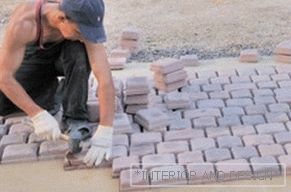 After the base has been prepared and profiled, it is necessary to fill in crushed stone layer 15 centimeters thick. In this case, the necessary slopes must be observed. Pillow ram vibrating plate.
After the base has been prepared and profiled, it is necessary to fill in crushed stone layer 15 centimeters thick. In this case, the necessary slopes must be observed. Pillow ram vibrating plate.
The next step will be the creation of formwork, further a layer of concrete is poured in 10−15 centimeters. Sometimes additionally made reinforcement masonry mesh. Then curbs for tracks are installed on the cement-sand mortar. And already after the concrete is wetted with water, a cement-sand screed with a thickness of 2−3 cm is superimposed on it. And only then proceed to laying paving.
The final stage in the construction of such a site will be the filling of joints. trowel mix.



